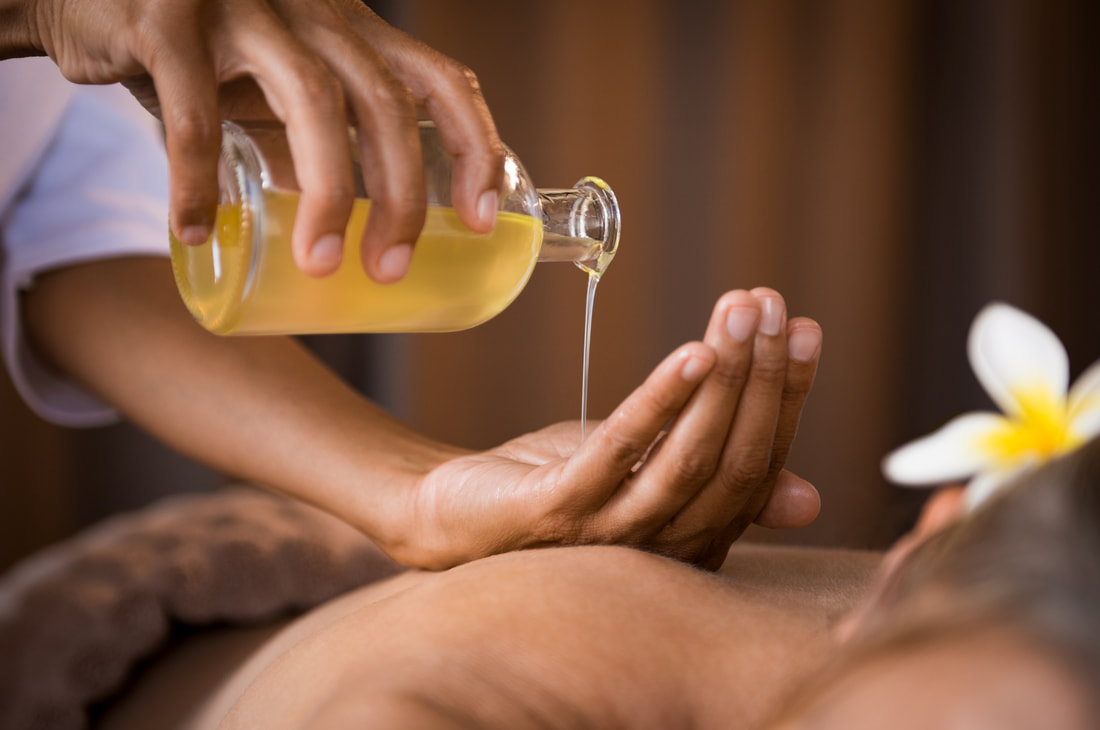Aromatherapy in massage is a holistic healing approach that combines the benefits of massage therapy with the use of essential oils extracted from plants. These essential oils, known for their aromatic properties and therapeutic effects, are incorporated into the massage session to enhance both the physical and psychological well-being of the individual.
Essential OIls

Essential oils are concentrated liquids containing volatile aroma compounds from plants. These oils capture the distinctive fragrance and characteristics of the plant from which they are derived. Essential oils are typically obtained through methods like distillation or cold pressing, preserving the natural properties of the plant.
Key characteristics of essential oils include:
Extraction Methods:
Uses:
Key characteristics of essential oils include:
- Aromatic Properties: Essential oils are known for their strong and distinct aromas. Each oil has a unique fragrance profile, ranging from floral and citrusy to earthy and spicy.
- Volatility: Essential oils are volatile, meaning they evaporate quickly when exposed to air. This volatility contributes to their ability to disperse aromatic molecules.
- Concentration: These oils are highly concentrated. It takes a large quantity of plant material to produce a small amount of essential oil, making them potent.
- Plant Source: Essential oils are extracted from various parts of plants, including flowers, leaves, stems, bark, roots, and fruits.
Extraction Methods:
- Distillation: Most essential oils are obtained through steam distillation, where steam is passed through plant material, capturing the volatile compounds.
- Cold Pressing: Citrus oils, like lemon or orange, are often extracted by mechanically pressing the oil from the fruit peel.
Uses:
- Aromatherapy: Essential oils are widely used in aromatherapy to promote well-being, relaxation, and mood enhancement through inhalation.
- Massage: They are incorporated into massage oils for their potential therapeutic benefits when applied to the skin.
- Home Care: Essential oils are used in household products like candles, diffusers, and cleaning solutions.
- Therapeutic Properties: Many essential oils are believed to have therapeutic properties, such as anti-inflammatory, antimicrobial, or relaxing effects. However, it's important to note that scientific research on their efficacy varies.
Topical Use
Topical use of essential oils in massage therapy can offer various benefits, both physical and psychological. Here are some key advantages:
- Muscle Relaxation: Certain essential oils, such as lavender, chamomile, and peppermint, have muscle-relaxing properties that can help ease tension and reduce muscle soreness during a massage.
- Pain Relief: Essential oils like ginger, marjoram, and eucalyptus are believed to have analgesic effects, potentially providing pain relief when applied topically in massage.
- Anti-Inflammatory Properties: Essential oils such as frankincense, chamomile, and tea tree may have anti-inflammatory properties, helping to reduce inflammation and soothe irritated tissues.
- Improved Circulation: Massaging essential oils into the skin, especially oils like rosemary, may promote blood circulation, contributing to overall cardiovascular health.
- Skin Nourishment: Carrier oils combined with essential oils, such as jojoba or almond oil, can moisturize and nourish the skin, leaving it soft and supple after a massage.
- Enhanced Absorption: The skin can absorb essential oils, allowing their therapeutic compounds to enter the bloodstream and exert their effects on the body.
- Aromatherapy Benefits: In addition to the topical application, the inhalation of essential oil aromas during a massage can provide psychological benefits, such as stress reduction and mood enhancement.
- Emotional Well-Being: Essential oils, when applied topically, may influence the limbic system, promoting emotional well-being and relaxation.
- Antimicrobial Action: Essential oils with antimicrobial properties, like tea tree or eucalyptus, may help protect the skin from harmful microorganisms during massage.
- Customization: Massage therapists can tailor essential oil blends to address specific client needs, creating a personalized and therapeutic experience.
- Reduced Anxiety: Aromas like lavender or bergamot, when applied topically, may have anxiolytic effects, helping to reduce anxiety levels during the massage.
- Scar Reduction: Certain essential oils, such as helichrysum, are believed to support tissue regeneration and may be used to reduce the appearance of scars.


